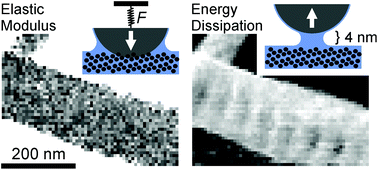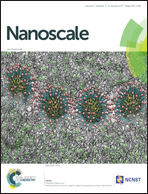Unraveling capillary interaction and viscoelastic response in atomic force microscopy of hydrated collagen fibrils
Abstract
The mechanical properties of collagen fibrils depend on the amount and the distribution of water molecules within the fibrils. Here, we use atomic force microscopy (AFM) to study the effect of hydration on the viscoelastic properties of reconstituted type I collagen fibrils in air with controlled relative humidity. With the same AFM tip, we investigate the same area of a collagen fibril with two different force spectroscopy methods: force–distance (FD) and amplitude–phase–distance (APD) measurements. This allows us to separate the contributions of the fibril's viscoelastic response and the capillary force to the tip–sample interaction. A water bridge forms between the tip apex and the surface, causing an attractive capillary force, which is the main contribution to the energy dissipated from the tip to the specimen in dynamic AFM. The force hysteresis in the FD measurements and the tip indentation of only 2 nm in the APD measurements show that the hydrated collagen fibril is a viscoelastic solid. The mechanical properties of the gap regions and the overlap regions in the fibril's D-band pattern differ only in the top 2 nm but not in the fibril's bulk. We attribute this to the reduced number of intermolecular crosslinks in the reconstituted collagen fibril. The presented methodology allows the mechanical surface properties of hydrated collagenous tissues and biomaterials to be studied with unprecedented detail on the nanometer scale.


 Please wait while we load your content...
Please wait while we load your content...